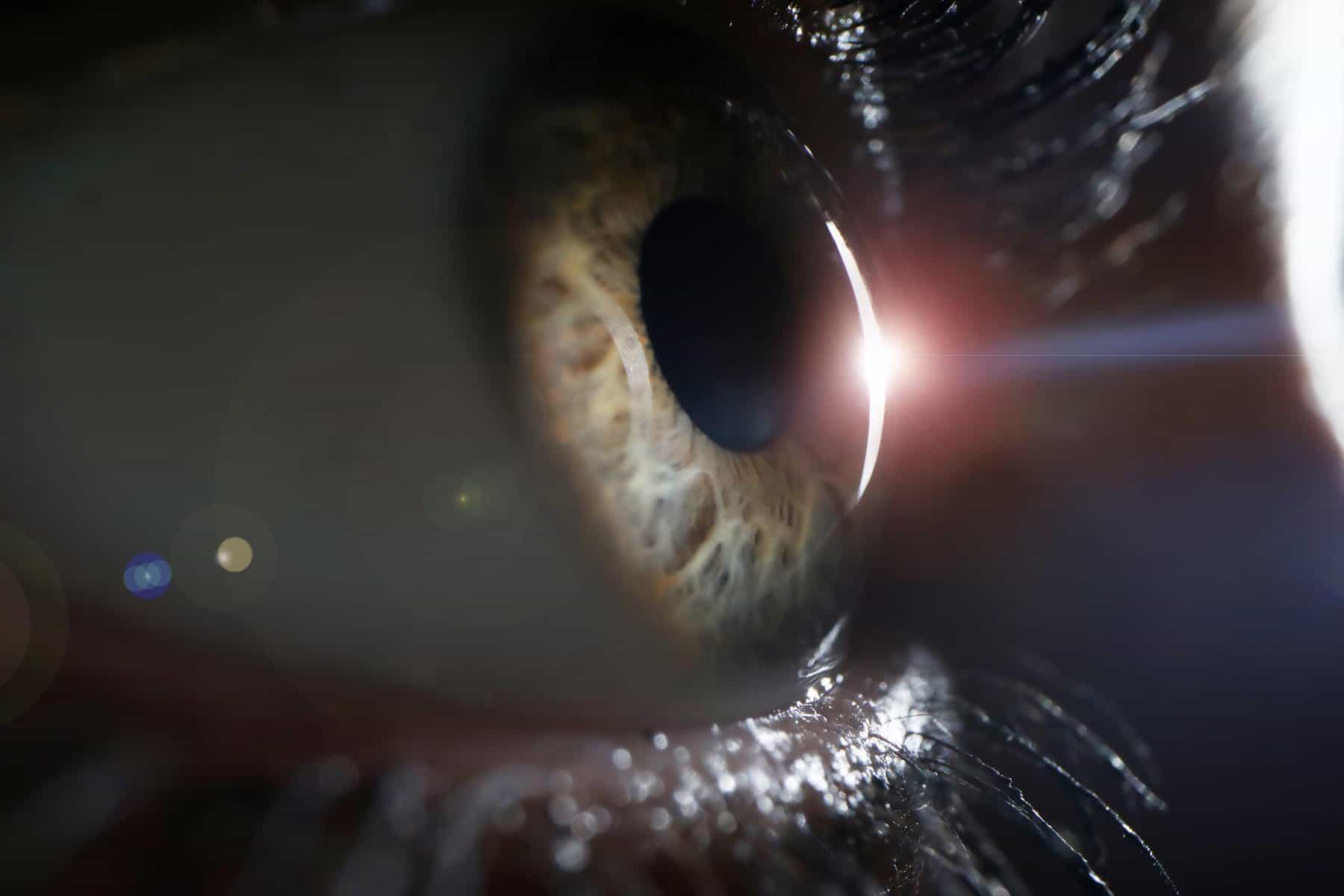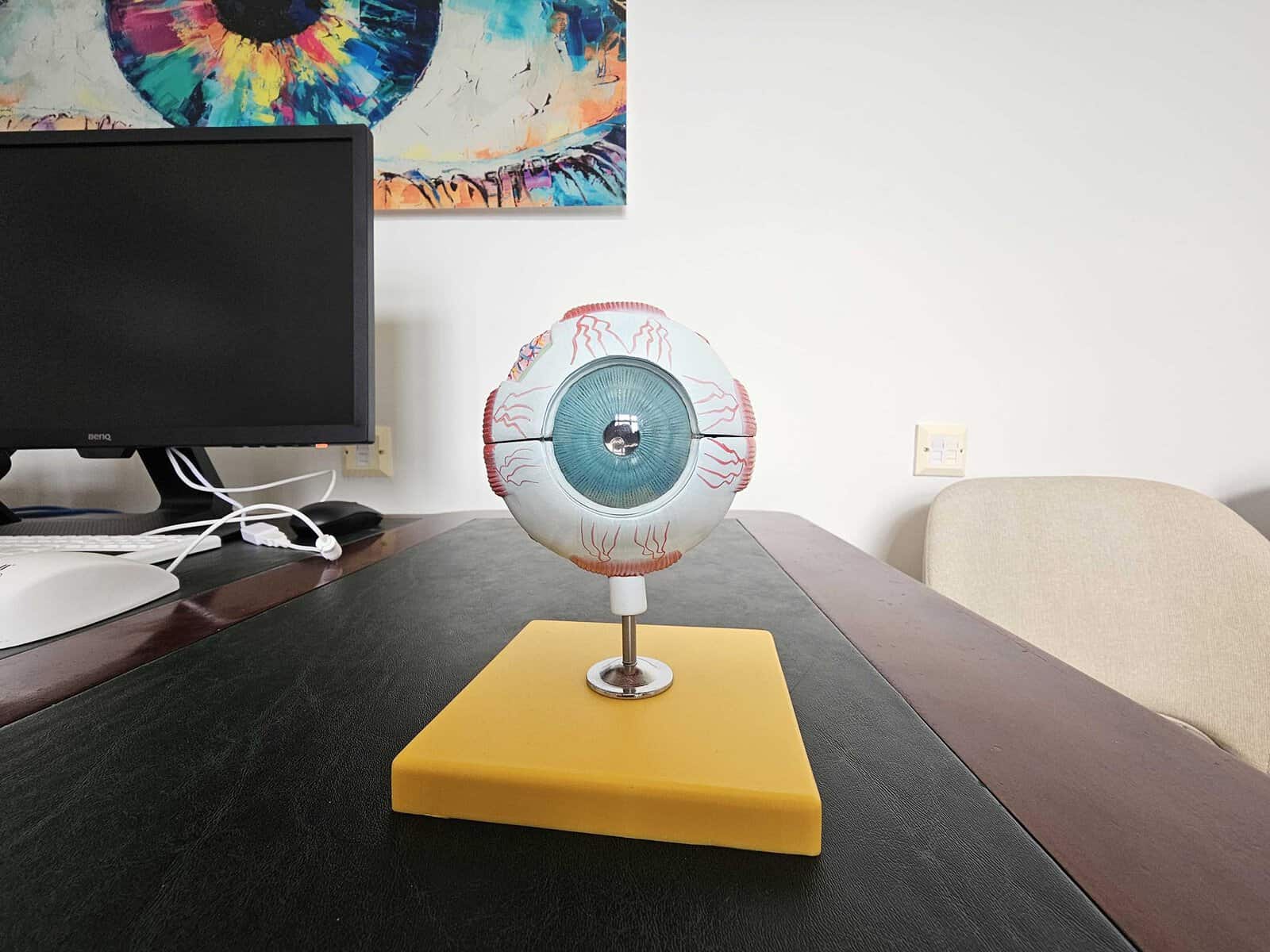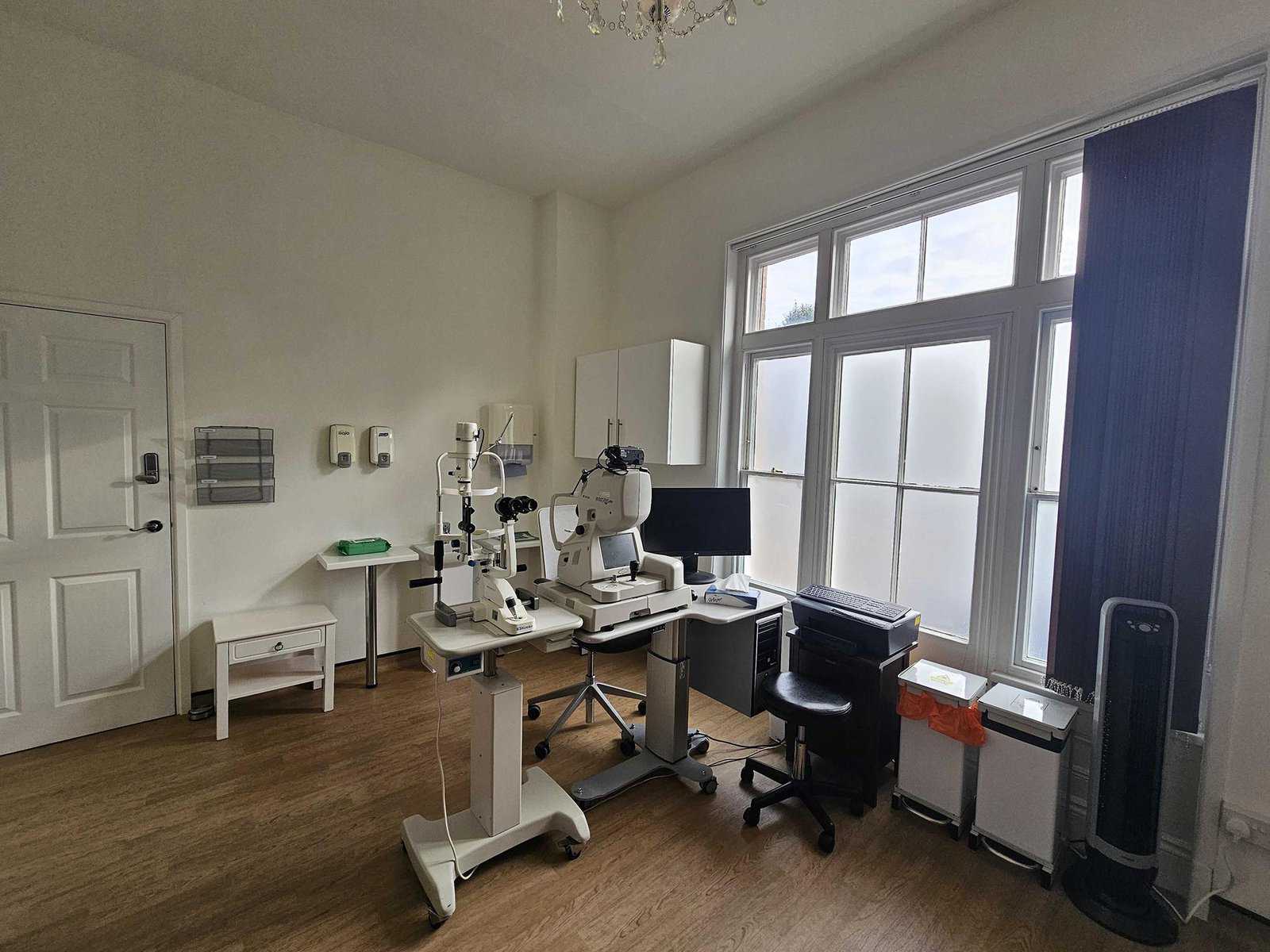Selective Laser Trabeculoplasty (SLT)
Discover how SLT can effectively manage your glaucoma and reduce intraocular pressure. Contact us today to enquire about a consultation and explore your treatment options at The Forbury Clinic.

Overview
Selective Laser Trabeculoplasty (SLT) is a highly effective, minimally invasive procedure used to treat glaucoma. It helps to lower intraocular pressure (IOP) by improving the drainage of fluid from the eye. SLT is an excellent option for patients seeking an alternative to traditional glaucoma medications or surgery. At The Forbury Clinic, we offer this advanced treatment to help manage glaucoma and prevent vision loss. Addressing glaucoma promptly is crucial to preserving your vision and maintaining your quality of life. Contact us today to learn more about SLT and schedule a consultation.


What is Selective Laser Trabeculoplasty (SLT)?
Selective Laser Trabeculoplasty (SLT) is a laser procedure used to treat open-angle glaucoma. The laser targets the trabecular meshwork, the part of the eye responsible for draining fluid, to enhance outflow and reduce intraocular pressure. SLT is a selective treatment, meaning it specifically targets pigmented cells in the trabecular meshwork without causing damage to surrounding tissues. Common symptoms of glaucoma that may benefit from SLT include increased IOP, visual field loss, and optic nerve damage. SLT is particularly beneficial for patients who have not responded well to medications or are looking to reduce their reliance on eye drops.
Causes and Risk Factors
Causes
Glaucoma, which SLT treats, is primarily caused by increased intraocular pressure due to fluid buildup in the eye. This can result from:
Blocked drainage channels in the eye
Overproduction of aqueous humor (eye fluid)
Genetic factors
Age-related changes in the eye
Risk factors contributing to the development of glaucoma include:
Family history of glaucoma
Age over 60
Elevated intraocular pressure
Certain medical conditions like diabetes and hypertension
Prolonged use of corticosteroid medications
History of eye injuries
Diagnosis
Diagnosing the need for SLT involves a comprehensive eye examination. Key diagnostic steps include:
- Tonometry: Measuring intraocular pressure
- Gonioscopy: Examining the drainage angle of the eye
- Visual field test: Assessing peripheral vision for any loss
- Optic nerve imaging: Using OCT (optical coherence tomography) to evaluate the optic nerve head and retinal nerve fiber layer
- Pachymetry: Measuring corneal thickness, which can influence IOP readings

Treatment Options
SLT is a preferred treatment option for managing glaucoma due to its effectiveness and minimal invasiveness. At The Forbury Clinic, we offer a comprehensive breakdown of available treatments, including:
- Non-Surgical Options
- Surgical Treatments
- Innovative Treatments
Medications:
Eye drops and oral medications to reduce IOP.
Laser Treatments:
Besides SLT, other laser treatments like argon laser trabeculoplasty (ALT) can be considered.
Trabeculectomy:
A surgical procedure to create a new drainage pathway for the fluid.
Drainage Implants:
Inserting tiny tubes to facilitate fluid drainage.
Minimally Invasive Glaucoma Surgery (MIGS):
Cutting-edge techniques to enhance fluid outflow with less tissue disruption.
SLT:
Using a low-energy laser, SLT targets the trabecular meshwork to improve fluid drainage. The procedure is quick, painless, and has a high success rate in lowering IOP.
Managing Glaucoma with SLT
Post-SLT, managing glaucoma involves regular follow-ups and lifestyle adjustments. Patients should:
Attend regular eye check-ups:
Monitor IOP and optic nerve health.
Adhere to prescribed medications:
If any are needed alongside SLT.
Maintain a healthy lifestyle:
Regular exercise and a balanced diet can help manage overall health and eye pressure.
Protect eyes from injury:
Avoid activities that could harm the eyes.
Complications and Prognosis
SLT is a safe and effective procedure with minimal complications. Possible complications include mild inflammation and temporary IOP spikes, both of which are manageable with medications. The prognosis for patients undergoing SLT is generally positive, with many experiencing significant reductions in IOP and stabilisation of their glaucoma. Early and consistent treatment is crucial to preventing vision loss and maintaining eye health.


Why Choose The Forbury Clinic?
The Forbury Clinic offers advanced glaucoma care with a focus on patient-centered treatment. Our expert staff is skilled in performing SLT and other glaucoma treatments, utilising the latest technology to ensure the best outcomes. We are dedicated to providing personalised care tailored to each patient’s needs, emphasising safety, effectiveness, and comfort. Choose The Forbury Clinic for your glaucoma treatment and experience the benefits of our state-of-the-art facilities and compassionate care.
